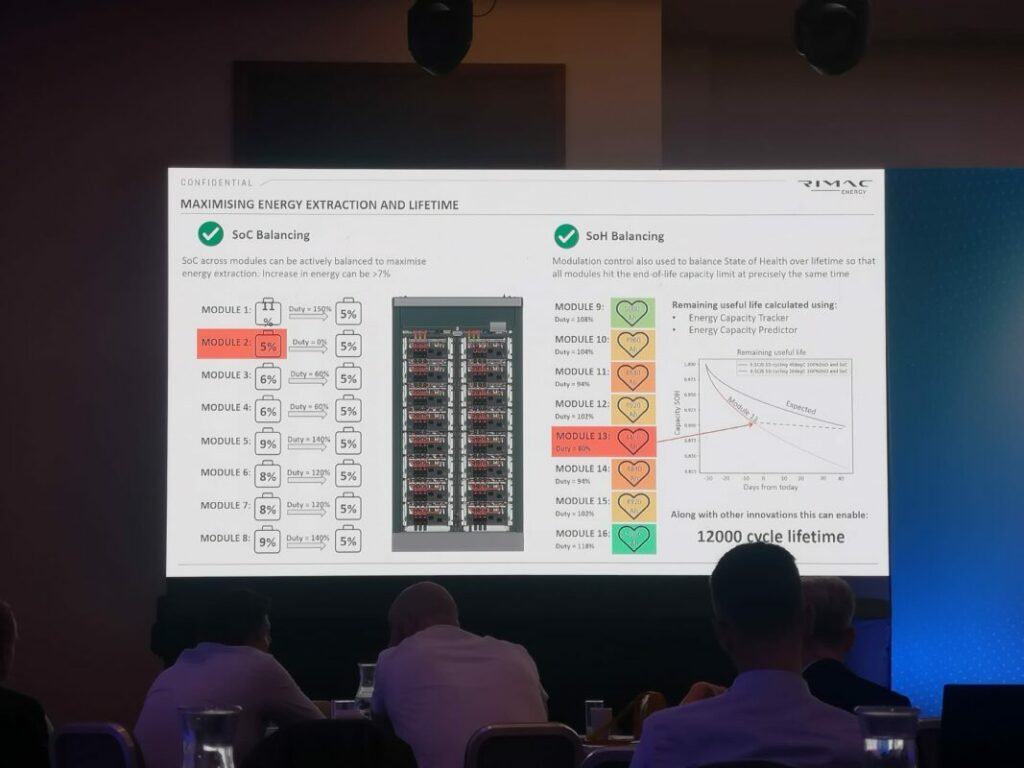The unit, called SineStack, is a lithium iron phosphate (LFP) cell-based modular BESS solution with an energy storage capacity of 790kWh and a 400kVa output.
The product’s core differentiating feature is its distributed inverter topology architecture, sometimes called an “AC battery”, where the inverter capability is distributed amongst all of the modules giving independent control over every 18 cells.
“That means more granular balancing, more redundancy, more energy extracted, longer lifetime, and all of that control to really make it a software-defined product,” Moorhouse said.
Furthermore, he claimed the BESS would have the best cycle life in the lithium-ion BESS industry at 12,000 cycles, the highest AC round-trip efficiency at over 92%, and the best energy density at 280kWh per square metre.
Addressing the audience, Moorhouse later said: “If you’re asking how we can achieve this, it really comes back to the point that we are vertically integrated across the whole system, there is virtually no boundary between the battery and the inverter, it’s highly integrated with reduced filtering requirements, which allows us to get the best footprint (energy density) in the industry.”
Rimac plans to start producing its BESS at mass scale from a new facility near Zagreb, Croatia, with an annual production capacity of 300MWh starting in 2025, rising to 1GWh a year later and 10GWh-plus further down the line.


